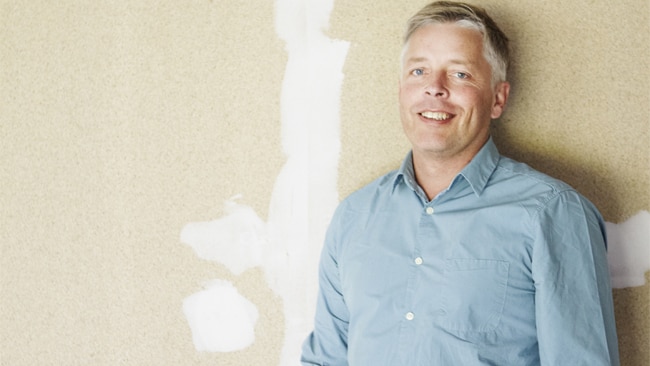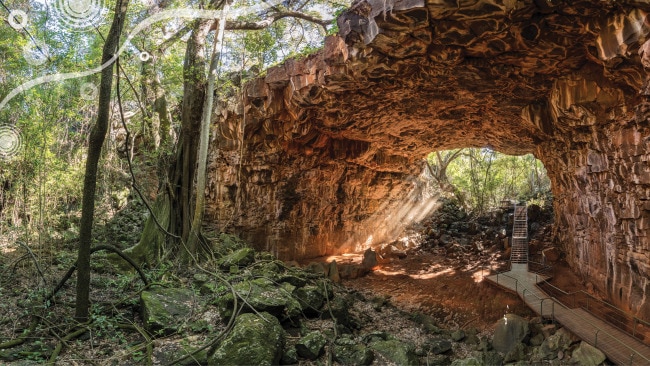Good design doing good: how IKEA is leading the way for the future of sustainable design
It’s been a symbol of clever design at affordable prices for years, but there’s a lot about IKEA you don’t know.

It’s been a symbol of clever design at affordable prices for years, but there’s a lot about IKEA you don’t know.
In the Swedish town of Älmhult, 20 percent of the modest population of 10,000 work for IKEA. Ingvar Kamprad was just 17 when he founded the company — which now produces more than 2000 new products every year — and at the tender age of 22, he invented flat-packing and revolutionised the world of home furniture forever.
The IKEA story is one of extraordinary numbers, the best of which the company’s head of design, Marcus Engman, recited faithfully as he delivered his keynote speech to open Australia’s first-ever Democratic Design Day.
With his bright blue eyes sparkling towards the sold-out audience, Mr Engman spoke to the five principles that guide IKEA democratic design.
“Every product should have great form and function, great quality for everyday use, produced in a sustainable way, and accessible for more people through low prices,” he said.
BEAUTIFUL DESIGN FOR EVERYONE
In person, he’s just as passionate about the democratic design process, describing it as “a way to make good design accessible for more people”.
“That is the democratic part but it is also a tool for our product development to ensure that we bring all the five aspects of democratic design to life in every product,” he says.
There’s a Willy-Wonka-for-design feeling to the IKEA process. Mr Engman and his team regularly conduct home visits to IKEA customers and the everyday public to inspect, and faithfully take notes on, the ways people use their space.
They consider what pieces might be missing and decide what they’ll create next.
“To buy a piece of furniture without a function wouldn’t occur to me. I don’t see furniture as a decorative item, I see it as something that should help make your life at home better.”
CLOSING THE LOOP
That ethos carries through to the company’s unprecedented commitment to use only renewable and recycled materials by 2030. The goal is to become “circular” and entirely climate-positive.
Mr Engman explains the reason behind the initiative as one of responsibility.
“When you cater for one billion customers, you have to be both sustainable and responsible. That is why we have made sustainability into one of the five pillars of democratic design, the IKEA tool of developing products,” he says.
The company understands its size and reach provides the opportunity to inspire and enable more than a billion people to support environmentally considerate furniture.
“I’m proud that through design we can nudge people into a sustainable behaviour. People can already use less water with our taps, use less energy with our LED bulbs and in that way everyone can contribute to a better world.”
LET THERE BE LIGHTThe homewares giant is also collaborating with NGO Little Sun, a brilliant project founded by Danish-Icelandic artist Olafur Eliasson and engineer Frederik Ottesen to provide reliable and affordable energy solutions to people living without electricity all around the world.
Together they're working on a series of off-the-grid tools for everyday life. Their aim is to make the range the perfect introduction to renewable energy for communities that lack access to electrical grids.
“By democratising great things, we can give many people access to products that make everyday life better, supporting and encouraging independent living,” Mr Engman says.
“If we can create good, democratic design solutions, then living off the grid can become sustainable, low-cost and will provide independence.”
LEADING BY DESIGN: BOKLOK
The concept of using design for a greater good is not a new one for the company. Back in 1997, the company launched the “BoKlok” affordable housing project, which when translated from Swedish means “live smart”.
The completely original collaboration between IKEA and Swedish construction giant Skanska saw standard elements — wall panels, doors, windows — made in large numbers to bring the elemental costs down. Kitchens and bathrooms were designed to be customisable by giving owners the option to add extra units and select from a range of interchangeable drawer and cupboard fronts.
The IKEA designers understand that while providing affordable housing is really important, giving people the chance to shape their own space is key. These small options provided flexibility without impacting overall affordability. Today, more than 10,000 BoKlok houses have been built, mainly in Sweden, Norway and Denmark, with a small number in the UK.
When asked how IKEA is helping with housing crises around the world and the push towards more compact living in metro areas, Mr Engman acknowledges it’s a big question.
“One is to spread good ideas all over the world. If you find good ideas in Japan, we want to share that with people in Sydney or Stockholm,” he says.
“The most common problem regardless of where you live is actually storage, which I believe IKEA is quite good at, and that we will continue focusing on.”
But by far the biggest takeaway from the IKEA democratic design showcase was that while the company sadly lost Ingvar Kamprad earlier this year, the concept of thinking out every aspect of its 10,000-plus designs to make the most of space and eliminate waste, which he put into motion 75 years ago, still guides the company.
As Mr Engman explains: “Most people think IKEA go somewhere and buy off the shelf, that we go ‘that’s nice, let's buy it’. But everything is designed from scratch, with a purpose and the future in mind.”




